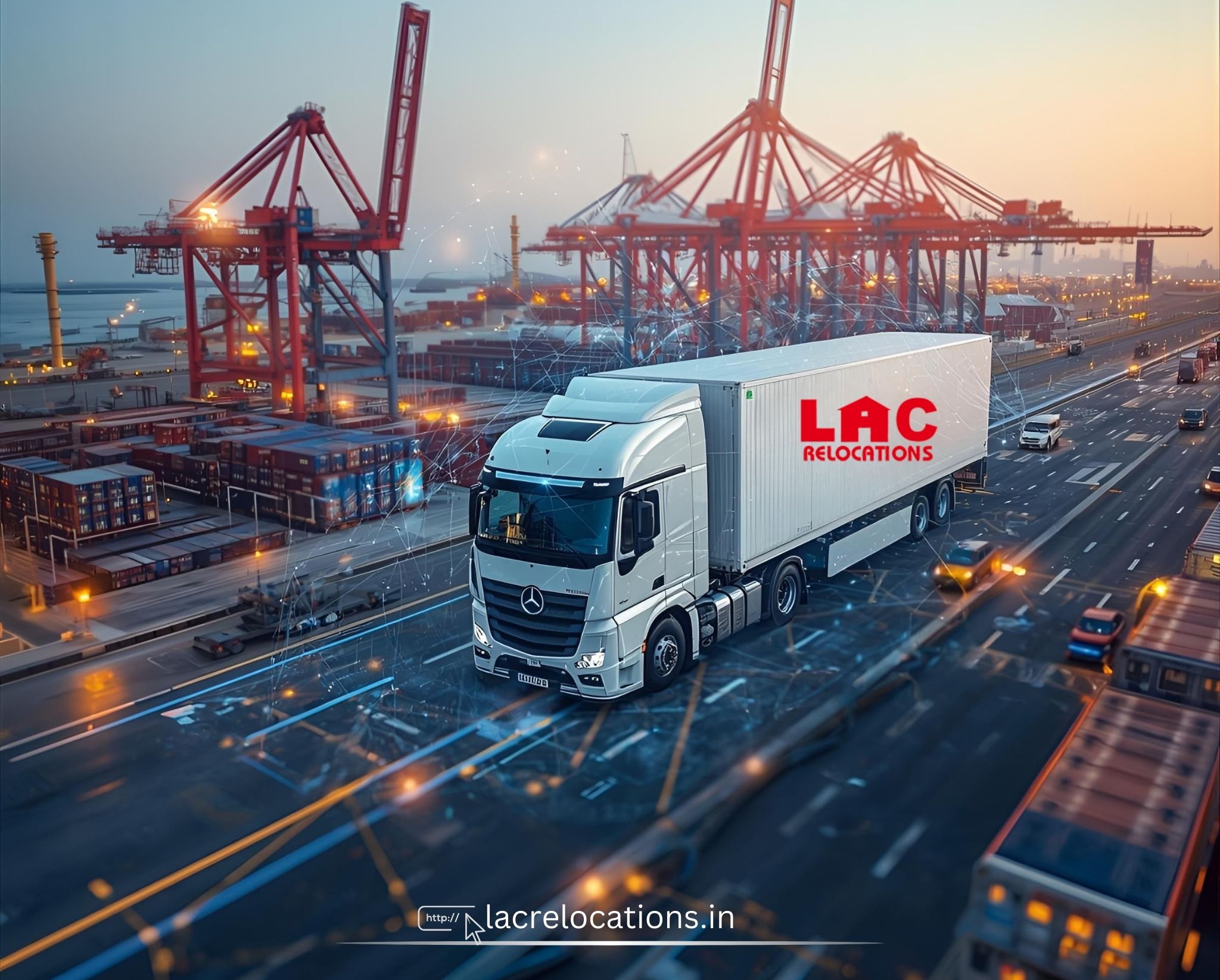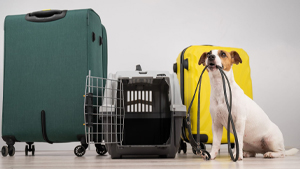The logistics industry has changed dramatically over the past ten years. Companies once relied on paper records and manual tracking. Now they use advanced technology to move goods faster and more efficiently than ever before.
This shift affects every part of supply chain management. Artificial intelligence helps make smart decisions. Blockchain keeps transactions secure. These tools help logistics companies stay ahead in a tough market.
Building the Digital Foundation
Digital transformation in logistics means using technology in every part of the business. It’s not just about switching from paper to computers. Companies are rebuilding how they work from the ground up.
Smart logistics takes this one step further. It connects different technologies together. The result is a system that can fix problems automatically and show you what’s happening in real time.
Companies can now track every package, predict when trucks need repairs, and find the best routes without human help. This level of automation was impossible just a few years ago.
Key Technologies Changing Everything
Artificial Intelligence and Machine Learning
Artificial intelligence in logistics works like a super-smart assistant that never sleeps. It looks at huge amounts of data and finds patterns humans would miss. Then it makes decisions based on what it learned.
Machine learning gets better over time. The more data it sees, the smarter it becomes. Routes get more efficient. Predictions become more accurate. Equipment breaks down less often because the system knows when to fix things before they fail.
AI also improves logistics customer experience. Chatbots answer questions instantly. They track shipments and handle basic customer service tasks. Customers get help 24 hours a day without waiting on hold.
Internet of Things (IoT)
IoT in logistics means putting smart sensors on everything. Trucks, containers, packages, and warehouse equipment all send data about what’s happening to them.
These sensors track location, temperature, and movement. They tell you if a package gets dropped too hard. They warn you if medicine gets too warm during shipping. They even know if someone opens a container when they shouldn’t.
Warehouse sensors count inventory automatically. They order new products when stock runs low. They track how items move through the building. This cuts down on mistakes and keeps everything running smoothly.
Big Data Analytics
Big data in logistics comes from everywhere. GPS systems, customer orders, weather reports, traffic updates, and sensor readings all create information.
Special computer programs sort through this data mountain. They find useful patterns and trends. Companies learn where their slow spots are. They understand what customers really want. They can predict busy seasons and plan better.
This data helps predict problems before they happen. Companies can reroute trucks around traffic jams. They can order extra supplies before running out. They can fix equipment before it breaks down completely.
Blockchain Technology
Blockchain in supply chain works like a digital record book that can’t be changed or faked. Every time something moves or changes hands, it gets recorded permanently.
This creates a complete history of every product. You can trace food back to the exact farm where it grew. You can verify that expensive items are real and not fake copies. You can prove that medicine was stored properly during shipping.
Industries like food, drugs, and luxury goods find this extremely valuable. When problems happen, companies can quickly find the source. They can prove their products are authentic and safe.
Advanced System Solutions
Transportation Management Systems (TMS)
Transportation management systems handle everything about moving goods from one place to another. They work with different shipping companies. They show you where packages are right now. They pick the cheapest and fastest way to ship things.
These systems think about many things at once. Distance, cost, delivery deadlines and how well different carriers perform. The best TMS platforms learn from experience and get better at making choices.
Good route planning can cut shipping costs by 15%. These systems change routes when traffic gets bad. They adjust plans when customers change their minds. Everything happens automatically without human help.
Warehouse Management Systems (WMS)
Warehouse management systems run everything inside distribution centers. They tell workers where to go and what to pick up. They organize receiving new products and shipping orders out.
Modern WMS connects with other technology to create smooth workflows. Everything works together to reduce errors and save time.
These systems also track how well workers perform. They spot training needs and assign tasks based on each person’s skills. This helps warehouses to stay productive even when order volumes change.
Real-Time Tracking Systems
Real-time tracking systems show exactly where packages are at any moment. They use GPS, cell phone networks, and internet connections to send instant updates.
These systems do more than just show location. They monitor how trucks are running. They watch driver behavior and fuel use. They check conditions that might damage cargo.
Customers can see their packages moving and get accurate delivery times. This reduces phone calls asking for “where’s my order?” It also makes customers happier with the service they receive.
Automation Technologies
Process Automation
Automation in logistics includes robots that work with software instead of physical machines. These software robots handle boring, repetitive tasks like entering data and processing invoices.
Software robots work all day and night. They process information much faster than people. They don’t make typing mistakes or forget important steps. This frees up human workers to handle more interesting and complex problems.
Companies often see benefits within months of adding these systems. The robots work alongside existing processes without requiring major changes to how things work.
Smart Warehousing
Modern warehouses use many types of automation. Robotic systems move products to the best storage spots. They retrieve items when orders come in. Everything happens automatically.
Conveyor belts with smart sorting can handle thousands of packages per hour. They read addresses and send boxes to the right shipping areas. Very few people are needed to keep everything running.
Pick-to-light systems guide workers through the warehouse. Lights show exactly what to pick and where to put it. This reduces mistakes and help workers move faster through their tasks.
Making Customers Happier
Last-Mile Delivery Solutions
Last-mile delivery solutions focus on getting packages from the local warehouse to your door. This is often the hardest and most expensive part of shipping.
Technology helps find the best routes to each address. It predicts when drivers will arrive. It allow customers choose delivery times that work for their schedule.
Mobile apps let customers track deliveries in real time. They can see exactly when their package will arrive. They can leave special instructions for the driver. Failed deliveries happen much less often.
Personal Service and Predictions
Computer systems learn what each customer likes and needs. They can predict when businesses will need to ship things. They suggest ways to save money by combining shipments or changing delivery dates.
These smart systems provide different service levels based on what worked well before. They send alerts about potential delays. They recommend better shipping options when they become available.
Helping the Environment
Technology helps logistics companies reduce their impact on the environment. Smart route planning cuts fuel use. Load optimization makes sure trucks carry full loads instead of half-empty ones.
Electric trucks are becoming more practical as batteries get better. Fleet management systems help companies switch to cleaner vehicles. They figure out which routes work best for electric trucks and when to charge them.
Carbon tracking systems measure emissions from all company operations. This helps businesses understand their environmental impact. It also shows customers that companies care about protecting the planet.
What’s Coming Next
The future of logistics technology brings even more exciting changes. Self-driving trucks will be able to drive all day without stopping for breaks. They’ll use less fuel and deliver goods faster.
Drone delivery will reach remote areas quickly. They’ll carry medicine to places regular trucks can’t reach. Small packages will fly directly to customer locations.
Artificial intelligence will get much smarter. It will handle complex decisions that currently need human judgment. Robots will work safely alongside people in warehouses and loading docks.
Quantum computers will solve problems that regular computers can’t handle. This could make route planning and scheduling incredibly efficient.
Making Technology Work
Successful companies start small when adding new technology. They test systems in one location before expanding everywhere. This approach reduces risk and helps identify problems early.
New technology must work with existing systems. Companies need to plan carefully how different programs will share information. Training help employees learn new tools and processes.
Measuring results is important. Companies track delivery times, costs, and customer happiness. This data shows whether technology investments are paying off.
The best approach includes change management programs. These help workers adapt to new ways of doing things. Support and training ensure everyone can use new tools effectively.
The Road Ahead
Technology continues to reshape how logistics works. Companies that adopt these tools gain major advantages. They cut costs, improve service, and make customers happier.
The pace of change keeps getting faster. New innovations appear regularly. Logistics companies must stay current with trends and capabilities to remain competitive.
Companies need to understand how different tools work together. They must train their people and measure their results.
The transformation affects every part of the supply chain. From the warehouse to the customer’s door, technology improves every step of the process.
Smart companies view this as an opportunity. They invest in understanding new capabilities. They experiment with innovative approaches. They build partnerships with technology providers who understand their needs.
At LAC Relocations, we understand how important modern logistics technology is for our clients’ success. We use advanced tracking systems, AI-powered route optimization, and sustainable transportation options. Our investment in these technologies means businesses that work with us get the benefits of the latest innovations. We help companies improve their supply chain performance and keep customers happy in competitive market.

















